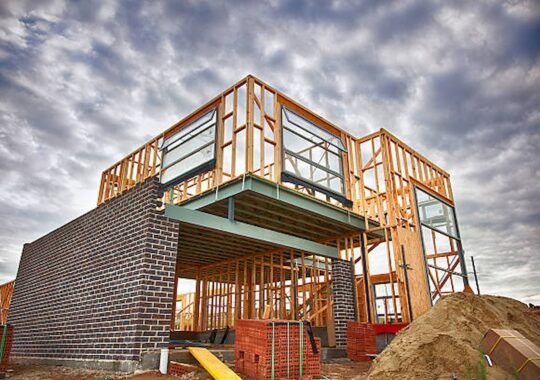Key Takeaways
- Discover the elements that make commercial spaces inviting and functional.
- Learn how to balance aesthetics with practicality in interior design.
- Gain insights on the latest trends and how they can be applied to different commercial environments.
Practical interior design transforms commercial spaces into inviting and functional environments. Thoughtful layouts optimize workflow while cohesive aesthetics enhance customer and employee experiences. Incorporating ergonomic furniture, strategic lighting, and branded elements creates a balance of style and practicality. The result is a space that reflects the business identity and fosters productivity.
The Power of Interior Design in Commercial Spaces
In the fast-paced world of commerce, the environment in which business transpires holds significant sway over a company’s success. The role of interior design in this context cannot be overstated. Renowned commercial interior design companies are increasingly pivotal in transforming spaces into areas that promote both employee efficiency and customer satisfaction. Strategic design goes beyond mere aesthetics; it influences behavior and enhances the clientele’s entire experience, impacting how occupants feel within these environments.
Consider the subtle power of well-planned interiors that breathe life into commercial settings. A pristine design bolsters a company’s identity and ethos, creating a memorable impact. A thorough design plan’s implementation can frequently identify the possibility of increased sales and client loyalty through an inherent appeal that subtly advances corporate goals.
Elements of Effective Commercial Interior Design
The hallmark of effective commercial interior design lies in its core components, such as layout, lighting, color palettes, and choice of materials. These elements work symbiotically to craft spaces that are both inviting and efficient. Adequate lighting, for instance, serves the dual functions of highlighting products in a retail setting and setting suitable ambiance in hospitality venues.
Color choices can dramatically influence mood and perception. For example, calmer tones in a wellness center foster relaxation, while vibrant hues in a tech startup’s office may inspire innovation and energy. Similarly, selecting materials—considering factors like durability and sustainability—plays a critical role in a commercial space’s functionality and aesthetic appeal.
Balancing Aesthetics with Functionality
An interior design that supports corporate objectives must strike a balance between functionality and attractiveness. It requires thoughtful consideration of practical aspects such as traffic flow, accessibility, and ergonomic design. Even as designers strive for visual allure, the space must inherently cater to ease of movement and comfort for its users.
For example, a chic restaurant layout should be visually appealing and ensure servers can move effortlessly between tables. Similarly, office spaces designed with flexible usage can adapt to different work styles, promoting productivity while maintaining a sleek look. This balancing act of aesthetics and utility turns a physical location into a dynamic asset that responds and decapitates to its users’ needs.
Innovative Trends in Commercial Interior Design
The sphere of interior design is ever-evolving, with new trends continually reshaping the landscape. Among the leading styles is biophilic design, which integrates natural elements like greenery and water features into indoor spaces. This approach not only enhances aesthetic appeal but also contributes to the well-being of individuals by fostering a connection to nature, an attribute that modern studies have associated with improved mental and physical health.
Moreover, incorporating technology into interiors is no longer a futuristic concept but a present reality. These technology integrations improve the usability and appeal of modern commercial buildings, from interactive displays that engage customers in retail locations to intelligent lighting systems that adapt to natural light levels.
Tailoring Design to Different Commercial Sectors
Design solutions must be bespoke to meet the varied needs of different commercial sectors. In retail, creating an engaging and immersive customer journey might involve designing a layout that guides customers intuitively through a store. The hospitality industry may focus on crafting a relaxing, luxurious atmosphere that encourages guests to stay longer.
Each industry has distinct priorities and challenges that interior design can address by aligning with brand identity and ensuring the space resonates with the target audience. Design’s adaptability to each sector underscores its vital role in enabling businesses to thrive amidst competitive landscapes.
The Role of Technology in Modern Design
Integrating technology within interior design is revolutionizing how spaces are conceptualized and experienced. By enabling designers and clients to see changes before they are done, technologies like augmented reality (AR) and virtual reality (VR) lower the margin of error and increase client satisfaction.
Understanding the influence of smart technology in interior design is crucial, as it facilitates the creation of adaptable and responsive environments. For instance, smart systems can manage lighting and climate control automatically, enhancing comfort and energy efficiency and thus supporting sustainable practices.
Sustainability in Commercial Interiors
As awareness of environmental concerns grows, the demand for sustainable design in commercial interiors has become more pronounced. Companies that use eco-friendly products and energy-efficient practices reduce their carbon footprint and attract more environmentally conscious clients.
Sustainable interiors benefit more than just the environment; they offer long-term cost savings and often uphold higher quality standards, improving occupant well-being. Businesses that invest in sustainability enhance their reputation and support the larger initiative to address environmental issues.
Final Thoughts on Creating Effective Spaces
Creating impactful commercial spaces requires a balanced approach that considers aesthetics and functionality. Beyond mere decoration, interior design is about crafting experiences that resonate with people and support business objectives. By staying responsive to trends and incorporating technological and sustainable practices, businesses can ensure their spaces remain relevant and competitive.





